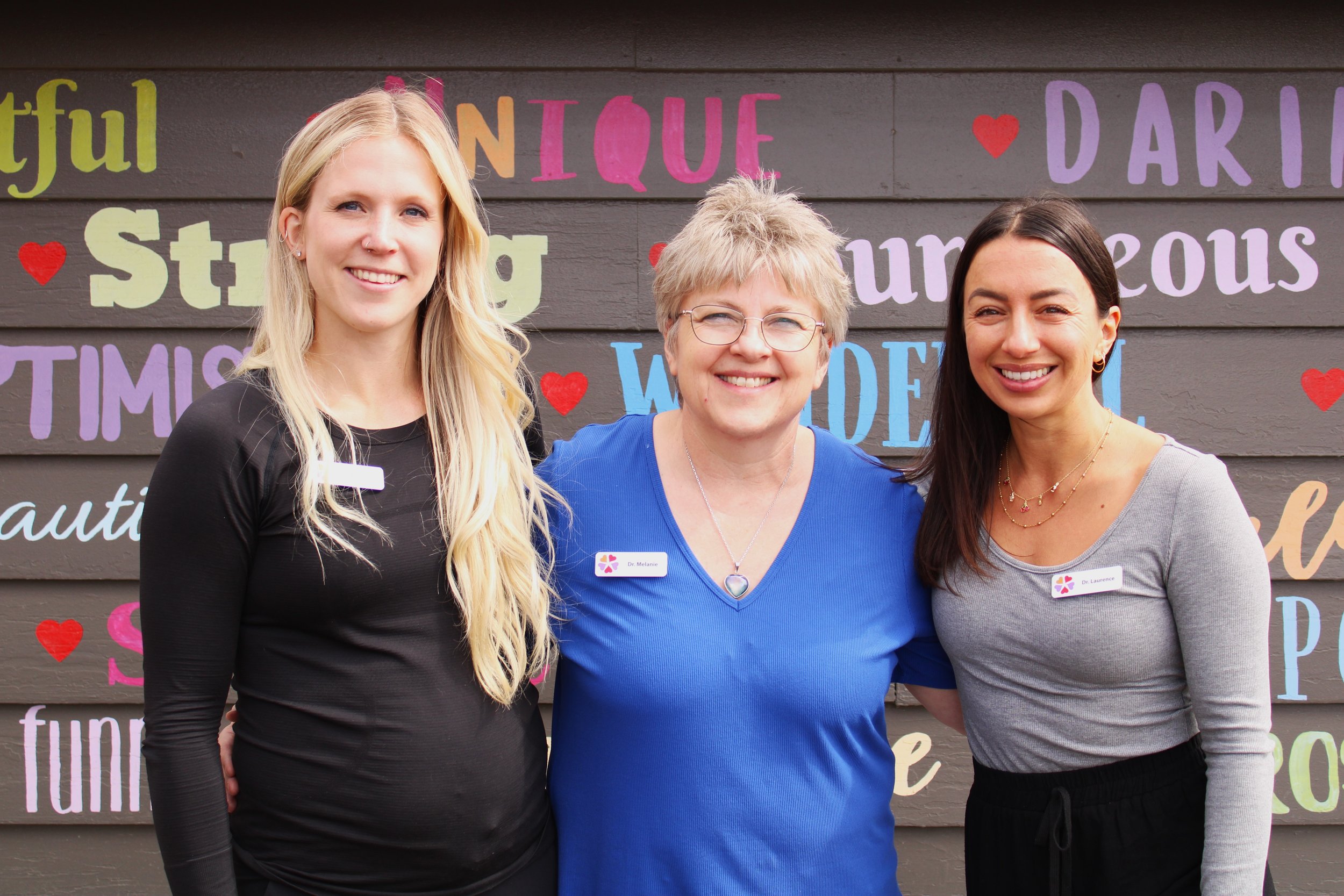
ATNR - Asymmetrical
Tonic Neck Reflex
The information presented on this webpage is printed with permission from Harkla.co

More facts about the ATNR - Asymmetrical Tonic Neck Reflex
The Asymmetrical Tonic Neck Reflex (ATNR) is elicited by a simple head turn or visual stimuli to either the right or the left.
When an infant is lying on their back and their head is turned to one side, the arm on that same side will extend while the opposite arm will flex in towards the body.
Additionally, there is leg movement that coordinates with the arm movement however it is not typically as pronounced as the arm movement.
The ATNR is often called the “fencing reflex.”
The kicking that is felt in utero is due to the ATNR!
The ATNR assists the birth process, along with the Spinal Galant. It allows the baby to descend down the birth canal and the process of birth actually helps develop the ATNR, as it is reinforced by the birth process. The ATNR plays a role by assisting with “unscrewing” down the birth canal.
Because the ATNR is elicited with head movement, it is also connected directly to the vestibular system, which affects balance and muscle tone.
Another big role that the ATNR takes part in is hand-eye coordination and developing skills on each side of the body - think of turning your head to reach and grab an item.
Integration of the ATNR is around the same time that the Moro and Palmar Grasp reflexes are also integrating, as well as around the same time, the infant is intentionally reaching for objects, has gained head control, and may start crawling.
What is the ATNR - Asymmetrical Tonic Neck Reflex?
Signs of a retained Asymmetrical Tonic Neck Reflex in an older child or adult:
skipped crawling
difficulties rolling back to belly
asymmetrical crawling motion - bum scooting, or one leg kick standing out when crawling
poor balance
challenges with left and right confusion
difficult hand-eye coordination
not using left and right hands consistently
reading and writing challenges
ADHD symptomology - dyslexia (difficulties with reading), dysgraphia (difficulties turning thoughts into written language), discalculia (difficulties with number-based information and math)
Retained Primitive Reflexes affect EVERYTHING
〰️
Retained Primitive Reflexes affect EVERYTHING 〰️
How We Can Help
Chiropractic adjustments and a home exercise program
can help to integrate retained primitive reflexes
Please Note:
As chiropractors, we believe that treating the whole nervous system is important.
If you would like to come to our clinic for treatment regarding Retained Primitive Reflexes, we will:
Perform a thorough chiropractic and neurological exam
Provide a comprehensive intake form that will help us to focus on which reflexes might be retained
make an individualized plan for you and/or your child
Our treatments include chiropractic adjustments that usually start at 2 times per week for 1-2 months
We will send you with home exercises that must be done twice a day for at least 30-60 days (if not more!)
for your nervous system to integrate the retained primitive reflexes
Then we will re-exam to assess and plan again
We will do our best to help; however, it might not be possible to integrate Retained Primitive Reflexes
- that depends on the individual’s brain and nervous system function
If you would like more information, or to
make an appointment with one of our Doctors,
please call us at 403-945-2422

To help integrate the Asymmetrical Tonic Neck Reflex, you will need to do
Every morning for 30 DAYS
20 repetitions of the Lizard exercise
20 repetitions of at least ONE FUN Exercise that you can choose from the second pdf download
(Of course, you can do as many of the fun exercises as you like!)
Every afternoon or evening for 30 DAYS
20 repetitions of the Lizard exercise
20 repetitions of at least ONE FUN Exercise that you can choose from the second pdf download
(Do as many of the fun exercises as you like!)
Exercises to Integrate
the Asymmetrical Tonic Neck Reflex
Examples of the Lizard Exercise that we’ve found on YouTube
Here are more fun Asymmetrical Tonic Labyrinthine Reflex Integration Exercises to choose from
Click Here to see 26 videos of Additional FUN Exercises - click on the ATNR Functional Activities folder
Click Here for additional FUN integration exercises that we’ve found on YouTube
Click Here to print a 30 days exercise Tracking Calendar
Dr. Melanie, Dr. Laurence and Dr. Leah have taken many courses about retained primitive reflexes. One course, offered by Harkla, called Assessment and Integration of Primitive Reflexes Master Level was created by Rachel Harrington and Jessica Hill, both occupational therapists
We have been given permission by them to post their very thorough information on our website and to give their handouts to our patients



